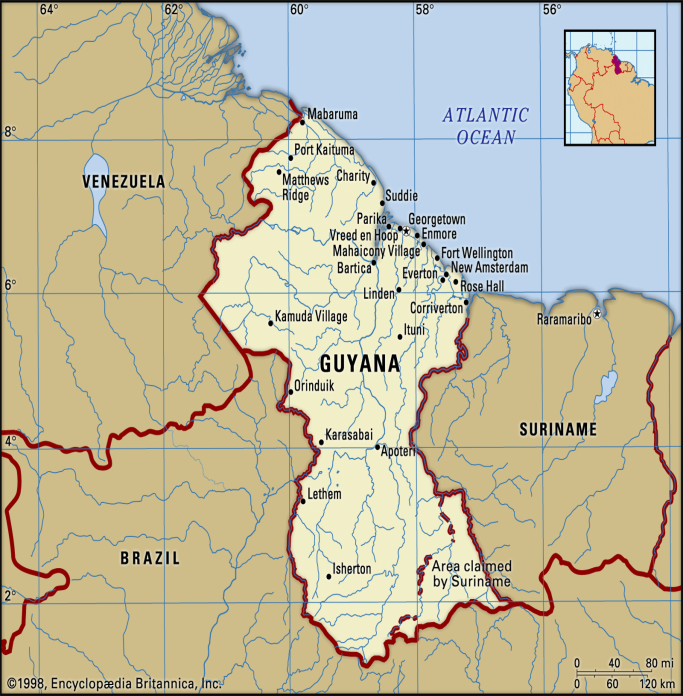Guyana: South America’s Gateway to Caribbean Culture
Why in the news?
Guyana’s strategic blend of South American geography, Caribbean culture, and booming natural resources like oil has garnered global attention for its economic growth and unique cultural identity.
Geographical and Cultural Overview:
- Guyana lies on the northeastern coast of South America, sharing borders with Suriname, Brazil, and Venezuela.
- It has maritime boundaries with Barbados and Trinidad and Tobago.
- The country uniquely combines South American geography with Caribbean cultural influences.
Historical and Natural Wealth:
- Gained independence from British rule in 1966, reflecting its rich colonial legacy.
- Approximately 80% of Guyana’s land is covered by tropical forests, contributing to its ecological significance.
- Abundant natural resources include gold, bauxite, and oil, which play a key role in its economy.
- Cultural diversity stems from a mix of indigenous, African, Indian, and European influences.
Key Landmarks and Language:
- Georgetown, the capital, serves as an essential port city and administrative hub.
- Prominent rivers like the Essequibo and Demerara shape its landscape and support biodiversity.
- Guyana is the only English-speaking nation in South America, making it distinct in the region.
About CARICOM:
- Establishment: Formed in 1973 to foster economic integration and cooperation in the Caribbean.
- Members: Includes 21 countries (15 Member States and 6 Associate Members), such as Antigua and Barbuda, Bahamas, Barbados, and Belize.
Significance of CARICOM for India:
- Multilateral Support: CARICOM countries back India in forums like the UNSC.
- South-South Cooperation: Engaged in the 3rd Voice of Global South Summit (2024).
- Defence Exports: HAL delivered Dornier 228 planes to Guyana.
- Climate/Energy: Collaboration via the ISA and disaster resilience initiatives.
- Diaspora: Hosts Indian communities, notably in Trinidad and Tobago.
Sources Referred:
PIB, The Hindu, Indian Express, Hindustan Times




